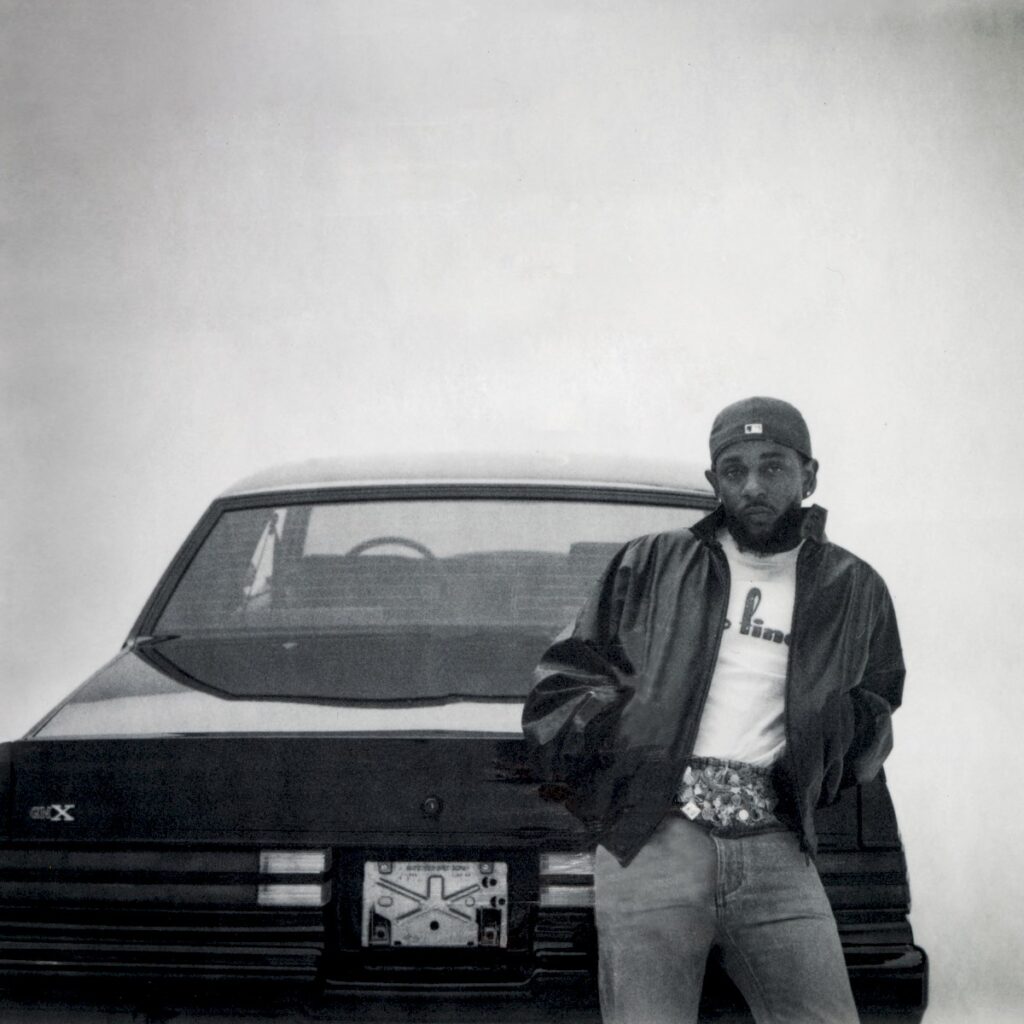Previously,
The Best 25 Albums of 2024: My Picks #25-21
The Best 25 Albums of 2024: My Picks #20-16
The Best 25 Albums of 2024: My Picks #15-11
10.
Cassandra Jenkins, ‘My Light, My Destroyer’

Cassandra Jenkins’ third studio album, My Light, My Destroyer, is a profound exploration of the dualities of existence, seamlessly blending themes of love, loss, and cosmic wonder. The title My Light, My Destroyer encapsulates the album’s central concept: the inseparability of light and darkness, love and destruction. This duality is poignantly expressed in the song Omakase, where Jenkins sings, “My lover/my light/my destroyer/my meteorite.” The album’s cover art, featuring a pink and purple sky, further reinforces this theme, leaving it ambiguous whether it depicts a sunrise or sunset, symbolizing the cyclical nature of beginnings and endings. Jenkins’ exploration of these themes is not limited to romantic relationships but extends to broader existential questions. The album grapples with the human condition, the interplay of grief and awe, and the search for meaning in a vast, indifferent universe. This is evident in tracks like Devotion, where Jenkins opens with the line, “I think you’ve mistaken my desperation for devotion.” In Betelgeuse, Jenkins incorporates a field recording of her mother identifying stars, adding a personal touch to the song’s cosmic musings. Like her last album An Overview On Phenomenal Nature, Jenkins’ lyrics are often poetic and layered, blending personal anecdotes with universal themes. The album’s lyrics often oscillate between candid realism and figurative language, weaving together narrative and abstraction. For instance, in Delphinium Blue, Jenkins sings, “I got a job at the flower shop/I see your eyes in the delphinium too,” juxtaposing mundane details with evocative metaphors. Musically, My Light, My Destroyer is a diverse and cohesive work that spans a range of genres and moods. Jenkins’ background as a multi-instrumentalist is evident in the album’s intricate arrangements and varied instrumentation. The album’s opener Devotion builds from Jenkins’ low, velvety voice to a grand yet understated climax featuring strings, floaty background vocals, and soft horns. The album’s composition is marked by its dynamic shifts and eclectic influences. Clams Casino stands out as a zippy rocker with jagged electric guitars, contrasting with Jenkins’ typically whispercore vocals. Meanwhile, Delphinium Blue features a nearly all-electronic backing, showcasing Jenkins’ ability to pivot between styles while maintaining a cohesive sound.
9.
MJ Lenderman, ‘Manning Fireworks’

Known for his distinct voice within the band Wednesday, MJ Lenderman ventures into more intimate territory with his fourth solo album, collaborating with producers Alex Farrar and his bandmates for a record that intricately balances wit and melancholy. Manning Fireworks is rich with introspection and existential reflection. Throughout the album, Lenderman addresses identity, societal expectations, and life’s inherent uncertainties. His lyrical prowess unfurls across tracks that blend humor with deeper existential musings, all encapsulated through vivid storytelling. This album gives out the vibe of a “study in thwarted masculinity,” with Lenderman’s songwriting satirically critiquing modern macho culture. A defining characteristic of Lenderman’s songwriting is his capacity to relay everyday experiences through a lens of humor and whimsy, revealing deeper truths about human interaction and societal norms. The thematic elements present in Manning Fireworks often juxtapose joy with regret. This duality is expertly showcased in the lead single, She’s Leaving You, a candid portrayal of relationship breakdowns. Tracks such as On My Knees and the title track Manning Fireworks offer a compelling examination of human frailty and resilience through lyrical narratives that are as humorous as they are reflective. Lines such as “Burdened by those wet dreams / Of people havin’ fun” encapsulate this blend of levity and contemplation. Manning Fireworks draws from a wide palette of soundscapes, seamlessly blending elements of country, indie, and alternative rock. Vintage guitar tunes reminiscent of the ’70s and ’90s are prominently featured, lending the album a nostalgic yet contemporary feel. The infusion of acoustic guitar patterns and upright bass lines throughout the record creates a heartfelt connection to the musical foundations of Americana. Produced by Lenderman himself alongside Alex Farrar, the album’s production does justice to its thematic undercurrents. The rawness in sound—a characteristic feature in his previous works—is retained, yet it evolves to accommodate the deeper emotional range explored in this collection.
8.
Clairo, ‘Charm’

What is it that’s keeping one foot out
And the other crawling in bed?
And what is it that’s keeping you alone
And leaving after we slow dance?
And, too, when candles burn out and the record is faded down
I know you’ve got people to turn to
In her third studio album, Charm, Clairo trades her bedroom-pop root for a D’Angelo-esque sexual tension. The concept of Charm revolves around the idea of being charmed by someone or an object, a theme that Clairo explores with a nuanced understanding of human emotions. Clairo herself has described the album as an exploration of moments that were never fully lived out, capturing the gray area of emotions where one knows enough about a person to like them but still lacks complete information. The themes of Charm are deeply personal, focusing on introspection, growth, and emotional vulnerability. Clairo navigates the complexities of relationships, self-discovery, and the ever-changing landscapes of young adulthood. The album delves into the feelings of longing, desire, and the bittersweet nature of fleeting moments, making it a relatable and poignant listening experience. The lyrics in Charm are a blend of poetic musings and candid confessions, capturing the essence of her experiences and emotions. For instance, in Glory of the Snow, Clairo sings, “I pull on the string that binds me/ To memories of the way I loved you,” a line that encapsulates the act of songwriting as a means of processing emotions. The album’s lead single, Sexy to Someone, is a candid exploration of the desire to be desired, with Clairo openly expressing her need for validation and connection. Musically, Charm is a rich tapestry of ’70s-inspired grooves, seamlessly transitioning between jazz, psychedelic folk, and soul. The album’s composition is characterized by its warm, lush melodies and intricate arrangements, creating a soundscape that is both nostalgic and contemporary. Clairo’s use of instruments such as the Wurlitzer, mellotron, organ, and piano adds depth and texture to the album, enhancing its overall sonic appeal. Tracks like Nomad and Slow Dance exemplify Clairo’s ability to blend different musical styles effortlessly. Nomad features a wistful steel pedal and velvety vocals, while Slow Dance navigates the nuances of a situationship with airy vocals and a twinkling piano. The album’s penultimate track, Glory of the Snow, channels the effervescence of artists like Harry Nilsson, with cheery woodwinds and echoing keys creating a whimsical atmosphere.
7.
Beyoncé, ‘COWBOY CARTER’

Two hands to Heaven
I’ve prayed, priest forgive my soul
Lovely daggers pierced my heart many moons ago
Toxic roses chased by wolves and carnivores
Lost virgins with broken wings that will regrow
Dedicated as Act II in what promises to be an emblematic trilogy that commenced with 2022’s Renaissance, Beyoncé’s latest album Cowboy Carter is an intricate narrative that weaves through the annals of Americana, while simultaneously rendering a modernist perspective on cultural identity and genre fluidity. To label Cowboy Carter merely as a country album would be a reductive oversimplification. It’s a profound reinvention of Americana through an ambitious amalgamation of country, blues, funk, folk, R&B, and beyond, all while peppered with dollops of her characteristic glamor and theatrics.
The album’s title itself, derived from the derogatory usage of “cowboy” to label Black men handling horses and cattle post-emancipation, is a stark reclamation. As Beyoncé herself elucidates, it’s about dismantling that negative connotation and celebrating the strength and resiliency that epitomized these men. By using the Western trope, Beyoncé interrogates the oft-celebrated, yet equally marginalized contributions of Black Americans to the cultural fabric of the U.S. This examination begins strikingly with Ameriican Requiem, where the artist deploys her powerful vocals to question the hypocrisy of a nation that was built on the backs of enslaved people. Her thematic discourse stretches across issues of racial injustice, identity, and the intertwining histories of Black and white America. Daughter, a traditional murder ballad with operatic undertones, explores fantasies of revenge while remaining grounded in personal angst. Not to be overlooked is her audacious cover of Dolly Parton’s Jolene, where Beyoncé transforms the traditionally plaintive cry into a powerful statement of strength. Her adroit adaption repurposes the familiar narrative, ascribing herself the title of a “Creole banjee bitch from Louisiane,” thus intertwining her cultural roots with broader Western themes.
The album’s intricate production, executed with meticulous precision, furthers Beyoncé’s vision of blending genres. The artist herself, alongside illustrious producers such as Derek Dixie, Jon Batiste, and No I.D., has orchestrated an auditory tapestry that traverses from the haunting resonance of blues to the intricate syncopations of funk and folk. This fusion is most palpable in tracks like Ya Ya, where the electrified live band mirrors a parade of genre influences as Beyoncé navigates through lyrical and rhythmic complexities with enviable ease. Cowboy Carter is replete with audacity, confronting and reconfiguring the essence of American music and identity.
6.
Kendrick Lamar, ‘GNX’

“Tell me every deed that you done and what you do it for”
I kept one hundred institutions paid, “Okay, tell me more”
I put one hundred hoods on one stage, “Okay, tell me more”
I’m tryna push peace in LA, “But you love war”
No, I don’t, “Oh, yes, you do, ” okay then tell me the truth
“Every individual is only a version of you
How can they forgive when there’s no forgiveness in your heart?”
I could tell You where I’m going, “I could tell you who you are”
Kendrick Lamar’s sixth studio album, GNX, is yet another surprise release after his legendary five-Grammy-winning diss track Not Like Us. The album’s title references the Buick Grand National Experimental model—a car steeped in cultural and personal significance. Lamar purchased the vehicle, a high-spec version of the same model his father used to bring him home from the hospital after his birth, weaving its symbolism into themes of heritage, nostalgia, and a longing for an untainted past. This symbolic framework anchors GNX as an ode to Lamar’s home city of Los Angeles and a reflection on Black identity, resilience, and the burdens of fame. Thematically, GNX dives into issues of systemic injustice, personal growth, and cultural commentary. Tracks like wacced out murals explore Lamar’s dissatisfaction with the rap industry while addressing systemic oppression. Meanwhile, reincarnated delves into legacy and mortality. Lamar intertwines his life story with the legacy of iconic Black musicians John Lee Hooker and Dinah Washington, addressing their struggles and triumphs in the first two verses before reflecting on his own legacy in the third. A secondary theme in GNX is Lamar’s role within the contemporary rap sphere. Following his public feud with Drake, which culminated in diss tracks and outspoken interviews, Lamar positions himself as a cultural disruptor in tracks like heart pt. 6. Here, Lamar grapples with creative autonomy, the pressures of success, and his departure from Top Dawg Entertainment. These themes coalesce into a reflective narrative that not only critiques the industry but also underscores Lamar’s resolve to remain an authentic and uncompromising artist.
The production of GNX is as daring as its lyrical content. Jack Antonoff—a surprising but effective collaborator—joins Lamar’s longtime producer Sounwave to create an eclectic yet cohesive sonic landscape. The album draws on a wide array of influences: G-funk, jazz, funk, mariachi, and electronic music. luther, Lamar’s collaboration with SZA, incorporates ‘80s R&B and freestyle music influences, evoking nostalgia while remaining contemporary. Kamasi Washington’s contributions to the album add another layer of depth, blending jazz elements into tracks like dodger blue, which serves as an ethereal Los Angeles anthem. On the flip side, gnx takes a more minimalist approach, incorporating local California-based artists like Hitta J3 and Peysoh to emphasize community collaboration. By crafting an unapologetically personal yet culturally resonant album, Lamar challenges mainstream hip-hop norms and demonstrates his ability to evolve while staying true to his roots.
Continue Reading:
The Best 25 Albums of 2024: My Picks #5-1